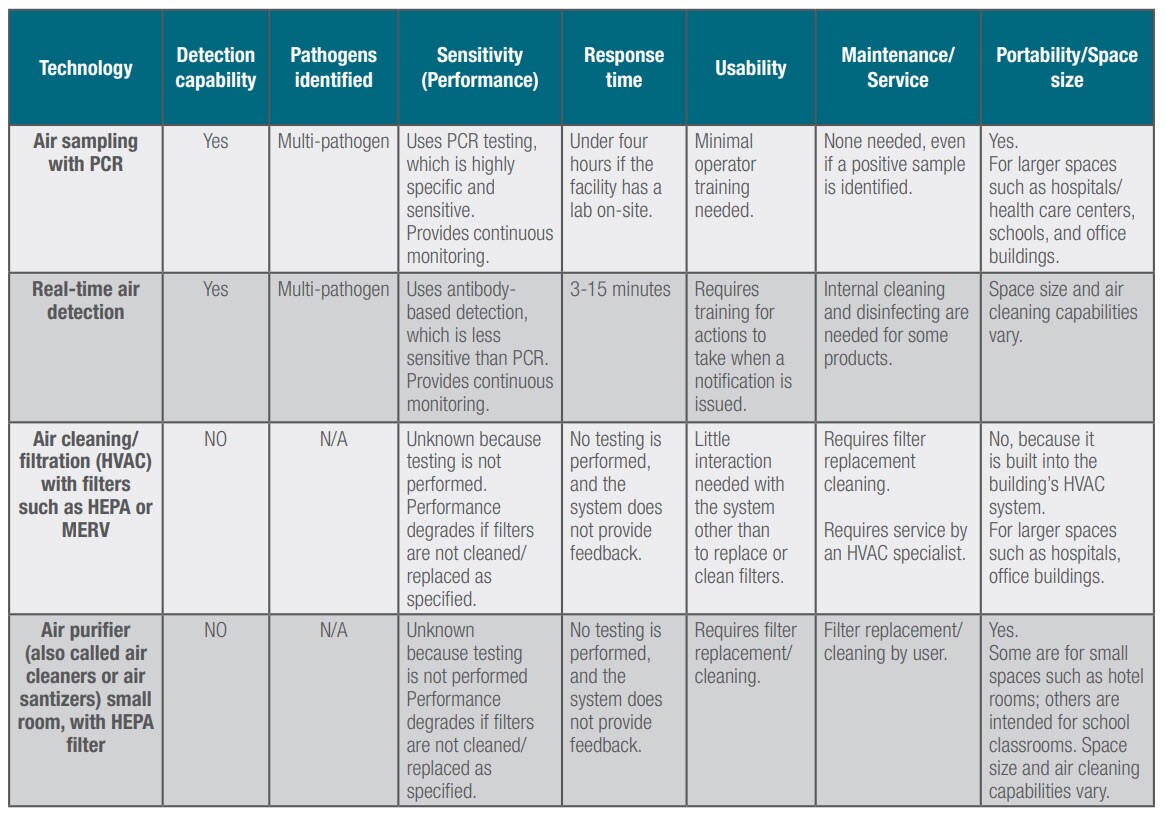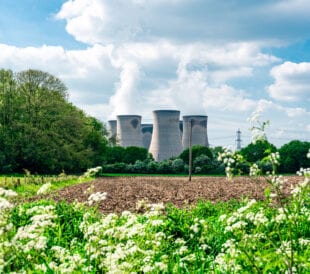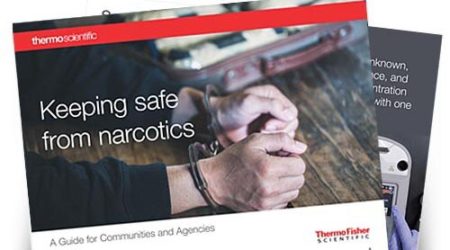 With the knowledge of how readily COVID-19 and other pathogens spread through airborne aerosols, concern about the safety of the air in indoor spaces has grown. This concern has led to the development of technologies for testing air for the presence of SARS-CoV-2 and other pathogens, including: air sampling + PCR and real time air detectors.
With the knowledge of how readily COVID-19 and other pathogens spread through airborne aerosols, concern about the safety of the air in indoor spaces has grown. This concern has led to the development of technologies for testing air for the presence of SARS-CoV-2 and other pathogens, including: air sampling + PCR and real time air detectors.
In addition, air cleaning and air filtration technologies, though not used to detect the presence of pathogens, are available for improving air quality.
Air sampling + PCR
Air sampling collects representative aerosol samples of ambient air and traps in-air pathogens on a collection substrate. The sample is then analyzed through laboratory testing using either PCR (polymerase chain reaction) methodology or RT-PCR (Reverse Transcription PCR).
PCR, the industry gold standard for analyzing for the presence of pathogens is a method for amplifying, or making many copies of, a segment of DNA or RNA. This method is highly accurate and especially useful when the sample contains only a small amount of material. Using this method, the original DNA is copied, and then each copy is copied; the result is examined when the chain reaction completes. RT-PCR, a variant of PCR for amplifying RNA targets like SARS CoV-2, first transcribes the RNA into DNA so it can be amplified.
Air samplers use one of three substrate types to collect pathogens:
- Solid collection eliminates the risk of sample contamination during transport and handling.
- Filter-based gel collection must be dissolved before testing, introducing the risk of contamination during handling.
- Filter-based liquid collection introduces the risk of contamination during transport and handling.
Air sampling utilizing PCR or RT-PCR analysis can be used in large facilities such as hospitals/healthcare facilities, office buildings, schools, and government buildings, where large numbers of people frequent monitored spaces.
You can view videos showing how this technology works on this page.
Real time air detectors
Real time air detectors draw in ambient air and can detect pathogens with antibodies. After the antibody reaction occurs, a signal triggers a notification. Some systems use a laser sensor to identify the presence of pathogens. The accuracy of antibody reactions and laser sensor for detection is unknown; this method, however, offers quicker results than PCR testing.
These detectors can be used for spaces of various sizes like offices, schools and mass transportation stations.
Air cleaning/Air filtration
Air Cleaning/Air Filtration, also called air purification, draws high volumes of air through a filter, to which pathogens become attached. Both mechanical air filters and electronic air cleaners can remove particles from the air. Mechanical air filters, such as high efficiency particulate air (HEPA) filters, capture particles on filter materials, while electronic air cleaners trap charged particles using electrostatic attraction.
Some air cleaning/filtration systems also move the air through a chamber where it is exposed to ultraviolet (UV) light. Because UV light damages or destroys the DNA of a cell, any pathogens present are rendered incapable of causing an infection. For a filtration system to be effective in preventing the spread of pathogens and disease, it needs either a high (>18) Minimum Efficiency Reporting Value (MERV) or a HEPA filter rating. Filter manufacturers provide recommendations for how frequently filters must be cleaned or replaced and the system serviced. The effectiveness of the air cleaning system, therefore, depends on the best practices at the facility.
Air cleaning/filtration systems fall into two categories:
- HVAC/furnace filters and other duct-mounted air cleaners, which are installed in a building’s central HVAC system. These systems clean the air throughout the building and are used in residences and large facilities such as office buildings, schools, and hospitals. For the cleaned air to circulate throughout the building, the HVAC system fan must be running.
- Portable air cleaners, which are run for a specified time period. These air cleaners consist of a filter and a fan that draws the air through the filter. Portable air filters are suitable for small spaces such as hotel rooms, and often are removed after their run time completes.
Comparing Air Sampling, Air Detectors, Air Filtration
We’ve put together a chart of these different environmental and occupational surveillance technologies so you can see at a glance what might be the best solution for your needs.

Download technology comparison document






Leave a Reply